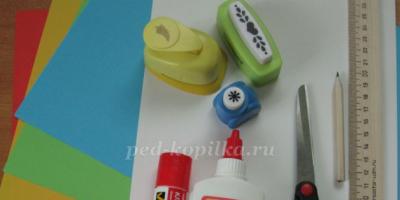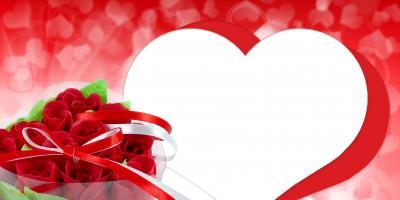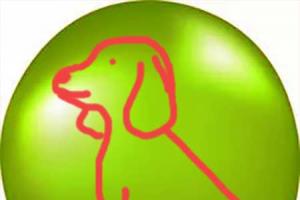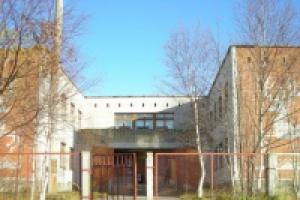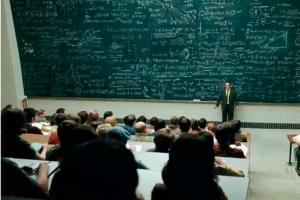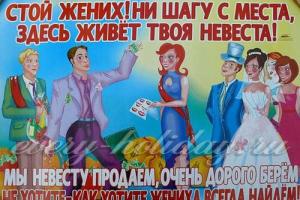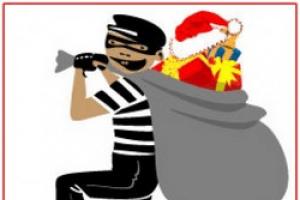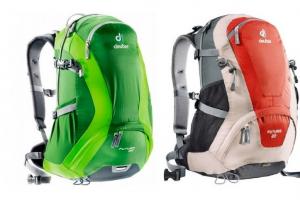This lesson is compiled according to the adapted work program "Rhythm and Dance" for children of 1 year of study (5-6 years old). This open lesson first half year. It presents dance games to develop a sense of rhythm, fantasy, improvisation, rebuilding.
This material is offered in game form, using plot fairy-tale images for children, which serves as an excellent basis for the successful understanding and learning of dance movements and performances by a child. Designed for those who work with children aged 5-6, for choreographers working with preschoolers, as well as for employees of preschool institutions.
Lesson plan
1. The topic of the lesson: “Skills of expressive movement. Work in pairs»
2. Type of lesson: combined
3. Purpose: comprehensive development child, the development of musicality and rhythm in the classroom, the formation creativity and development of the individual qualities of the child, by means of music and rhythmic movements.
4. Tasks:
Develop a sense of rhythm;
Learn to listen and hear music;
Contribute to the formation of expressiveness of movements, imagery in performance;
To instill in students a culture of communication with each other
5. Form of work: group, pair, game
6. Equipment and sources of information:
Music Center
Audio recordings
piano
7. Teaching methods: practical, verbal
8. Structure of the lesson:
1. Organizational moment (organized entry of children into the classroom and building in a line, bow - greeting) - 3 minutes
2. Warm-up in the middle: (warming up all muscle groups) - 10 minutes
3. Jumping in a circle - 7 minutes
4. The main part: game-rhythm (dances - games in a circle while reading poetry), musical and rhythmic etudes, exercises for orientation in space (rebuilding into a column one by one, two by four) - 20 minutes
5. The final part: exercises to restore breathing, hand work, bow - 5 minutes.
6. Summing up. - 5 minutes.
Plot-game lesson in rhythm "A trip to the forest" for children 5-6 years old
PLAN-SUMMARY of a lesson in rhythm
Plot game lesson "A trip to the forest"
Purpose of the lesson: improving the emotional expressiveness of students by repeating and practicing the movements passed. Identification of the level of development of the program.Tasks:
Raising a love and interest in music,
Enriching children's musical experiences through exposure to a variety of musical works,
Acquaintance of children with the simplest musical concepts, development of skills in the field of musical and rhythmic movement,
Development of emotional responsiveness, sensory abilities and musical ear, a sense of rhythm, the formation of expressiveness of movement,
Teaching elementary motor skills, achieving simplicity, naturalness and expressiveness of the performance of musical works,
To promote the emergence and initial manifestation of musical taste based on the impressions and ideas about music received,
To develop creative activity, independence and initiative in the musical and rhythmic movement.
Lesson type: a lesson to consolidate and improve knowledge, skills and abilities.
Lesson form: lesson
Basic working methods:
- visual (practical demonstration);
- verbal (explanation, conversation);
- game (game form of presentation of material).
Materials and equipment:
- music center (TSO);
- CD - discs with phonogram
-projector with forest slides
During the classes:
Entrance of children to the dance class. Building children in a line in a checkerboard pattern. A tribute to the teacher.
Teacher: Hello guys, today we have an unusual lesson, where do you think we will go? (illustration display)
Children's answer: Into the forest
Teacher: That's right, in the woods. But first, guess the riddle on what we will go there:
I eat coal, I drink water.
When I'm drunk, I'll speed up.
I'm carrying a convoy on a hundred wheels
And I'm called...
(locomotive)
Children's answer: Steam locomotive
Teacher: That's right, steam locomotive. In order to get on the locomotive, we go to the station.
We turn to each other. We go, raise our knees high, vigorously work with our hands. (E. Zheleznova "Game gymnastics")
Teacher: Well, here we come to the station and sit on the locomotive.
We go one after another, stomp our feet (the locomotive is moving), we bend our elbows and press them to our chest (the wheels are spinning). When the locomotive picks up speed, we run after each other. (E. Zheleznova "Game gymnastics")
Teacher: So we came with you to the forest. And what do we see? Guess the riddle:
Sisters are standing in the meadow:
Golden eye, white eyelashes.
(chamomile)
Children's answer: Chamomile
teacher: Let's collect a bouquet with you?
We go one after another, take 2 steps, bend down and pick a flower. (E. Zheleznova "Game gymnastics")
teacher: Well done, big bouquets turned out.
We listen to the riddle, who else do we see in the forest:
Who deftly jumps on the trees,
And flies up to the oaks.
Who hides nuts in a hollow,
Dry mushrooms for the winter?
(squirrel)
teacher: That's right, squirrel. Let's play squirrels with you.
We make a big circle, press the handles in front of us (paws), nod our heads 4 times, do 8 springy squats, jump forward 3 times - turn our backs to each other, 3 jumps forward - turn to face each other. (E. Zheleznova "Game gymnastics")
Pedago g: Well done.
Listen to another riddle of who we see:
The plane is light and fast
Fragrant flies over the flower.
Wings, tail and eyes
This is a miracle...
(dragonfly)
Children's answer: Dragonfly
teacher: That's right, dragonfly. Let's play dragonflies with you?
We turn one after another, the arms are opened to the sides (wings), we run on our toes, at the end of the music we sit down on a flower. (E. Zheleznova "Game gymnastics")
Teacher: Well done. We get up and imitate a forest with you:
The wind blows in our face Waving their hands in the direction “towards themselves”, like a fan
The tree swayed. hands up, smooth tilts from side to side
The wind is quieter, quieter smooth movements of the hands forward - up - down
We'll squat lower, lower. We squat
Teacher: Have you guys noticed frogs jumping here? Let's play frogs, shall we?
I.P. - Sit in one line, knees wide open to the sides, hands on the floor in front of you.
1-8 - 8 times with the head to the right and left,
1-4 - the first frogs jump up
5-8 - second frogs; 1-4 - the first frogs get up, make 2 claps in right side, sat down;
5-8 - make the second frog, 2 claps on the left side;
1-8 - all together make 8 claps left and right.
Since the beginning new phrase a few frogs jump forward and fall asleep, the game continues. (E. Zheleznova "The Frogs")
teacher: Well done. Do you guys know that animals also like to play? What will we play with you?
Children's answer: In "Freeze"
Description: Children run to the music, with the end of the music they freeze in a pose. The teacher asks one of the children to depict what he came up with.
teacher: Played enough? Well, now it's time to go home. We sit on the steam locomotive.
Teacher: This concludes our lesson. Let's say goodbye.
Children line up in a checkerboard pattern. A tribute to the teacher. Exit the children from the dance hall.
List of literature for students:
1. Bochkareva, N.I. The development of the creative abilities of children in the lessons of rhythm and choreography [Text] / N.I. Bochkareva. - Kemerovo, 1998. - 63 p.
2. Burenina A. I. Rhythmic mosaic. S. - Petersburg, 2000. - C5.
3. Burenina, A.I. Communicative dances - games for children: textbook / A.I. Burenina. - St. Petersburg: Musical Palette Publishing House, 2004.
4. Kolodnitsky, G.A. Musical games, rhythmic exercises and dances for children / G.A. Kolodnitsky. – M.: Gnom-Press, 2000. – 61s.
5. Pulyaeva L.E. Some aspects of the methodology of working with children in a choreographic team: Textbook. Tambov: Publishing House of TSU im. G.R. Derzhavin, 2001. - 80 p.
6. Savenkov I.A. Gifted children in kindergarten and school, p. 5.
Rhythm is a special kind of musical activity that conveys the content of music, mood, characters of images through movements. At the same time, music is taken as the basis, and dances and figurative movements serve for a deeper understanding and perception of a musical work. Why is rhythm useful for preschoolers? What does she give?
What is rhythm for?
Dance and gymnastic movements to music have been used for the upbringing and development of children since ancient times (in Greece, China, India). But as a method of education, rhythm was first identified by the Swiss composer and teacher Emile Jacques-Dalcroze.
What are the benefits of rhythm for children?
- Develops musical abilities.
- Develops plasticity, flexibility, expressiveness of movements.
- Teaches the child to feel the music, its character.
- Promotes development creative imagination.
- Forms the skill of self-expression through movements.
- Develops aesthetic feelings, taste.
- Increases the cognitive activity of the child.
- Helps release negative energy.
- Raises the mood.
- Relieves excessive nervous tension.
- Increases activity.
- Promotes the development of the initiative.
- Improves coordination of movements.
- Helps the preschooler to develop physically.
- Builds self-confidence.
Children, being engaged in rhythm, learn to express the genre of a musical work with movements, through role-playing dance games they develop balance, perception, memory, attention, thinking.
As you can see, regular rhythmic exercises are very useful for improving the physical shape of preschool children. Among other things, it helps to improve posture, strengthen ligaments and muscles. Children become more graceful, more relaxed, their movements acquire expressiveness.
When practicing rhythm with kids, teachers use various teaching methods (verbal, visual, practical). And the presentation of exercises in the form of an exciting game helps preschoolers in a relaxed way to master not always simple movements.

At what age can you work with preschoolers?
You can choose game exercises for children 3-4 years old. Kids of this age already know how to line up in a round dance and move in it, stomp to the beat of music, walk like a train, perform simple movements in pairs, coordinate their movements with a melody, etc.
But children of 5-6 years old are especially receptive to the development of musical and dancing abilities. At this stage, children actively develop imagination and visual-figurative thinking, speech, the ability to expressively and emotionally reflect the essence of the dance improves, the skill of regulating excitation and inhibition increases (children can switch between movements faster). Preschoolers are able to coordinate their movements with the actions of other participants in the class. Therefore, for children of the 6th year of life, it is already possible to include exercises that develop endurance and strength in classes.
On this age stage in preschool children, small muscles (especially of the hands) are still weak, but large ones (trunks, legs, arms) are sufficiently developed. Toddlers already know how to measure the efforts of their muscles. Therefore, when performing exercises on small muscles, difficulties will still arise. But older preschoolers can already perform movements of various amplitudes, switch from fast movements to slower ones, perform them while running, jumping or walking.

Features of dance in rhythm
The dances included in the rhythmic programs for preschoolers are usually easy for children to perform, accessible to them, but at the same time they bring a lot of joy.
These can be national dances (including round dances), pair dances, improvisation dances. Such compositions are always meaningful: they have a plot, dramaturgy, carry a certain idea. All this is expressed with the help of plasticity and dance patterns - spatial reconstructions.
Folk dances help to introduce preschoolers to folk culture. All of them are designed for group performance, which helps kids develop communication skills. Round dances and dances teach kids to be attentive to partners, to synchronize movements with them, reacting to the rhythm of the dance.
The most accessible for children of primary and secondary preschool age are Russian, Ukrainian, Czech and Belarusian dances and dances. But Polish, Bulgarian, Hungarian, Italian, Romanian are very peculiar, compositionally and plastically complex, most often quite fast in pace. They are suitable for older children who already understand the meaning of learning and honing exercises, can learn preparatory, basic exercises, which are then used in combination.
When learning a new movement, the teacher must strive to ensure that it occurs in a variety of combinations, to different music. So the kids will gradually learn to perceive the movement as a means for expressing images, actions, feelings.
If your child does not attend kindergarten, be sure to give it to the rhythmic circle. So, in addition to all of the above, he will join the world of beauty, get the opportunity to express his feelings, show character in dance, improve physical fitness, learn to better control his emotions.

Rhythm program
Kindergarten teachers use various rhythm programs for children. But all of them are built taking into account the age-related psychophysical characteristics and skills of children at each age stage. In such classes, children acquire a graceful gait, learn to control the body, and liberate themselves for public speaking.
In addition, such programs solve other problems:
- instill in children the basics of musical culture;
- help develop emotional susceptibility and responsiveness to various music, as well as a sense of rhythm, hearing, musical memory;
- teach children to evaluate movements (their own and other children), create their own game images.
In rhythm classes, preschoolers learn to identify and distinguish between:
- main musical genres (such as song, dance, march);
- the main types of rhythm (game, exercise, dance);
- simple musical terms and concepts (various tempos, loudness and pitch of sounds).
Achieving these tasks is possible if the nature of the movements corresponds to the musical image, its development, and when implementing the program, the basic principles of pedagogy are used: gradualness, consistency and systematicity. That is, the transition from simple to more complex in accordance with the dynamics of the development of children's abilities during regular classes.
Musical-rhythmic movements
The main types of musical-rhythmic movements include dances, games, exercises, dramatizations.

Games
Rhythmic games have not only rules, but also a certain plot, they can be performed to music or singing. IN story games to the music, the characters act out some action, conveying the images of the characters. In non-plot games, children need to perform certain movements to the music.
Singing games are driving round dances or staging songs. Children are involved in the process one by one, individually, in small groups, all together. During such games, rebuilding occurs (children need to stand in pairs, lines, in a circle, in a column), a change in direction of movement.

Dances (dances, round dances)
Dance in rhythm can include elements of not only folk, but also classical movements. The following types of dances and dances can be distinguished:
- with fixed movements;
- combined - from fixed and improvised movements;
- free - creative, allowing children, using movements and elements familiar to them, to create their own dance;
- dance round dances with staging of the plot with the help of dance movements;
- characteristic dances - performed by certain characters (bears, snowflakes, dolls);
- ballroom dancing with repetitive elements (waltz step, gallop, polka step).

Rhythmic exercises
They are used when it is necessary to learn or work out with children certain movements or elements, drawing, rebuilding. In this case, the teacher offers the children a game to work them out. When learning rhythmic exercises, one must proceed, first of all, from the capabilities of each child. Some grasp movements on the fly, others need the time, attention and patience of the teacher, his help.

Rhythm at home
All these types of activities are quite complex so that unprepared parents can use them at home. However, if they want to work with the child on their own, when, for example, the baby does not attend kindergarten for some reason, there is a simpler and more accessible method for everyone - rhythmic gymnastics. That is, the performance of certain movements or exercises to rhythmic music. By the way, in kindergartens, gymnastics is also widely used as a musical physical activity.
There are many complexes of such gymnastics, depending on age, they consist of introductory and main parts. Here are examples for different ages.
Complex for younger preschoolers
Introductory part:
- walking soldiers (brisk step);
- rolling ball (easy run);
- bouncing ball (jumps are performed on both legs);
- a breath of breeze (the child sways smoothly from foot to foot, holding his hands above his head).
Main part:
- shaking the head to the beat of the melody (hands down, feet shoulder-width apart);
- in the same position - raising the shoulders with a half turn to the sides alternately;
- from the same starting position, bend forward, arms are also stretched forward with palms up;
- the starting position does not change, the child turns the body to the sides, while the arms are relaxed, by inertia they wind up behind the back;
- hands on the belt, springy turns to the sides with a slight bounce.
The complex should be completed with exercises to restore breathing (inhale-exhale with accompanying hand movements, then inhale-exhale while lying on the floor).
Complex for middle preschool age
Introductory part:
- walking with a brisk step from the heel;
- stomping;
- walking with high legs;
- walking on heels;
Main part:
- Arms down, palms forward. The child bends one arm, looks at it, repeats with the other arm.
- The starting position is the same, the arms are turned inward. The kid turns in one direction, stretching his straightened arms forward, repeats in the other direction.
- From the same position, the baby performs forward bends, moving his arms back, then to the sides (hands are also pulled back).
- The starting position is similar, the arms need to be bent and raised to the forearms. The child squats while extending his arms.
- The main stance is the same, hands are turned palms forward. The child should spin to the sides alternately to the music, stepping from foot to foot.
- From the same stand, hands on the belt, the baby puts one leg forward and puts it on the heel, then repeats in the other direction. Can be repeated with a light half squat.
- The baby's legs are slightly apart, hands are lowered with palms forward. The kid performs 4 jumps in place, then 4 steps from foot to foot - also in place, on straight legs.
The complex also ends with exercises to restore breathing.
So, rhythm helps to develop not only musical, but also intellectual, creative, social skills in a preschooler, teaches him to be more organized. Therefore, she is given such attention in preschool educational institutions. However, homework, if systematic, can make a significant contribution to harmonious development baby.

